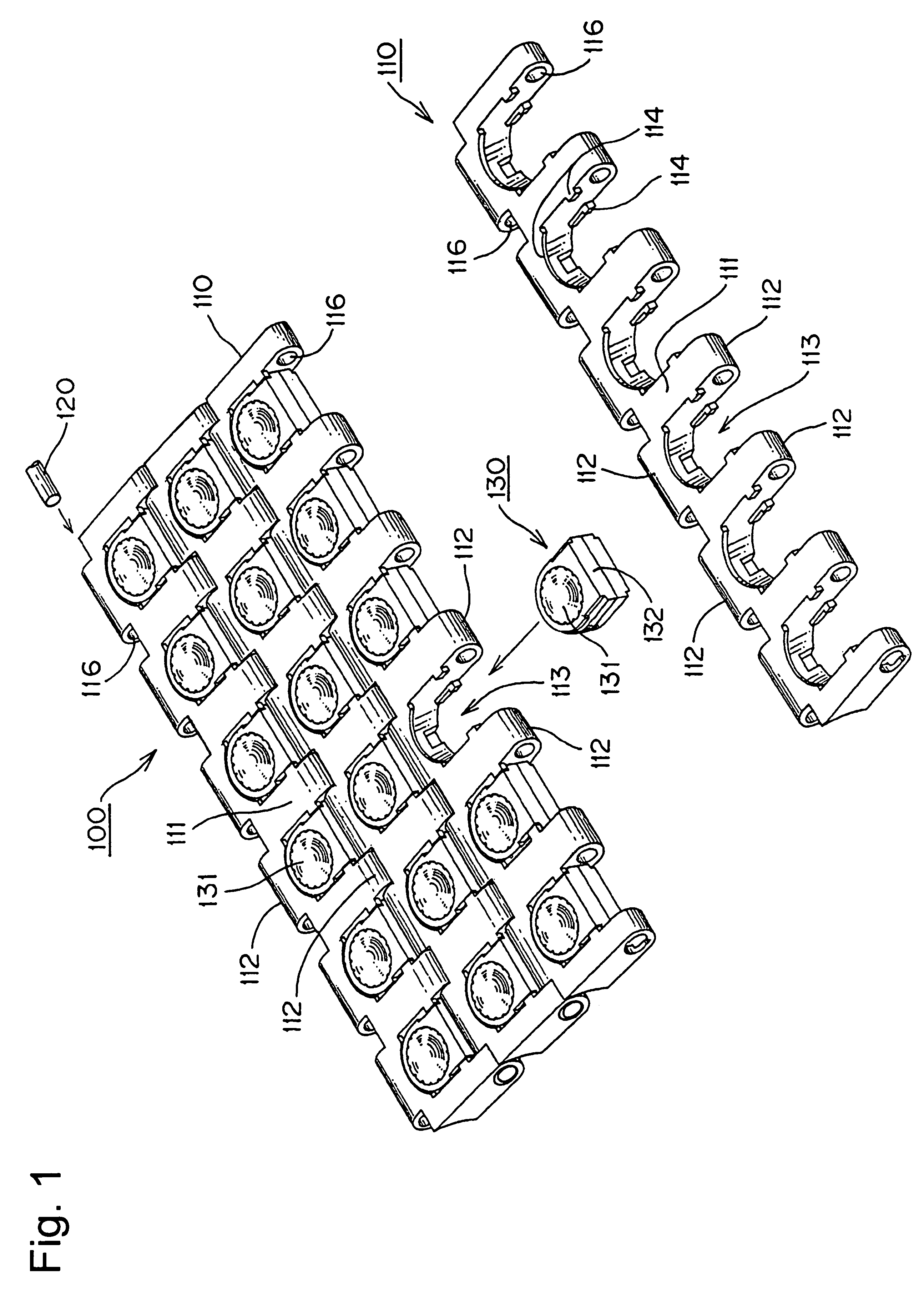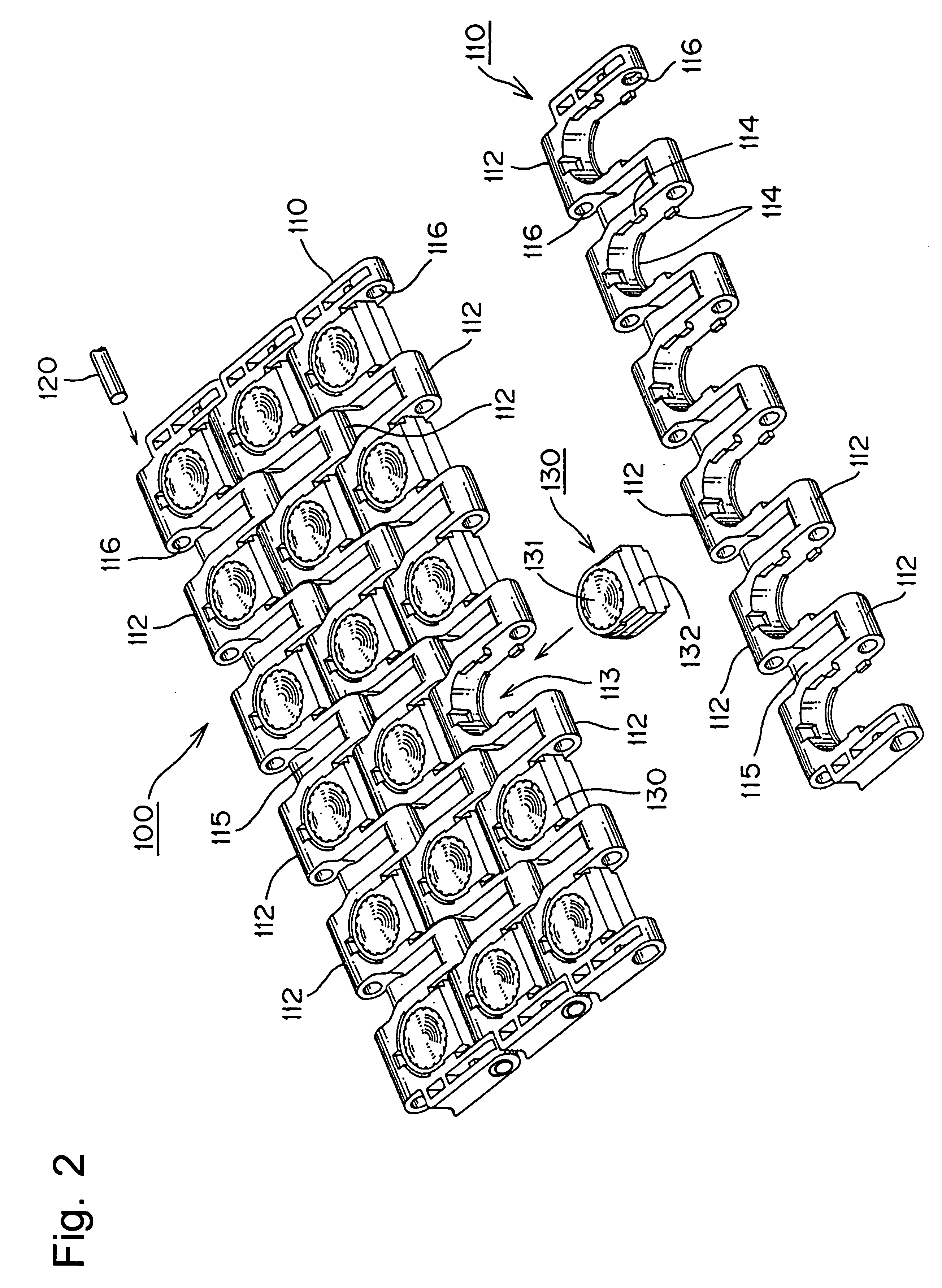Conveyor chain
a conveyor and belt module technology, applied in the field of conveyor chains, can solve the problems of increased sliding wear, increased sliding wear, and the above-described belts have problems with accelerated wear
- Summary
- Abstract
- Description
- Claims
- Application Information
AI Technical Summary
Benefits of technology
Problems solved by technology
Method used
Image
Examples
example 1
[0029]A first exemplary conveyor chain of the instant invention is described hereinbelow with reference to FIGS. 1 to 4.
[0030]FIG. 1 is a schematic explanatory view of a part of a conveyor chain of the present example viewed from the surface side. FIG. 2 is a perspective view the conveyor chain of FIG. 1 viewed from the back surface side of the chain link. FIG. 3 shows the components of the ball unit assembly. FIG. 4 is an explanatory view showing an operation state of the conveyor chain.
[0031]A conveyor chain 100 of the present example, as shown in FIG. 1, comprises a number of chain links 110 longitudinally connected to each other by the insertion of the hinge pins 120 into pin holes 116 provided in hinge portions 112. A free ball 131 in a ball unit 130 is mounted into a unit mounting region 113 formed in the chain link. The free balls 131 are held by the chain links 110 and articles (e.g., box-shaped, plate-shaped, and the like) are conveyed by being loaded on the free balls 131....
example 2
[0044]A second exemplary conveyor chain 200 of the instant invention is described hereinbelow with reference to FIG. 5.
[0045]FIG. 5 is a schematic explanatory view of a part of the conveyor chain, which is the present example, viewed from the surface side of the chain.
[0046]In the conveyor chain 200, ball holding channels 213 are integrally formed within a chain link 210. The chain link is made of polyacetal and the free bail 230 is made of polyamide.
[0047]It is noted that the functions of the free ball 230 are substantially the same as those of the free ball 131 of the first example.
[0048]As shown in FIG. 5, the conveyor chain 200 comprises a number of chain links 210 which are longitudinally connected to each other by inserting hinge pins 220 into pin holes 216 provided in hinge portions 212. A free ball 230 is held in a ball holding portion 213 formed in the chain link 210.
[0049]The chain link 210, as shown in FIG. 5, comprises a plurality of hinge portions 212 in a zigzag format...
PUM
 Login to View More
Login to View More Abstract
Description
Claims
Application Information
 Login to View More
Login to View More - R&D
- Intellectual Property
- Life Sciences
- Materials
- Tech Scout
- Unparalleled Data Quality
- Higher Quality Content
- 60% Fewer Hallucinations
Browse by: Latest US Patents, China's latest patents, Technical Efficacy Thesaurus, Application Domain, Technology Topic, Popular Technical Reports.
© 2025 PatSnap. All rights reserved.Legal|Privacy policy|Modern Slavery Act Transparency Statement|Sitemap|About US| Contact US: help@patsnap.com



